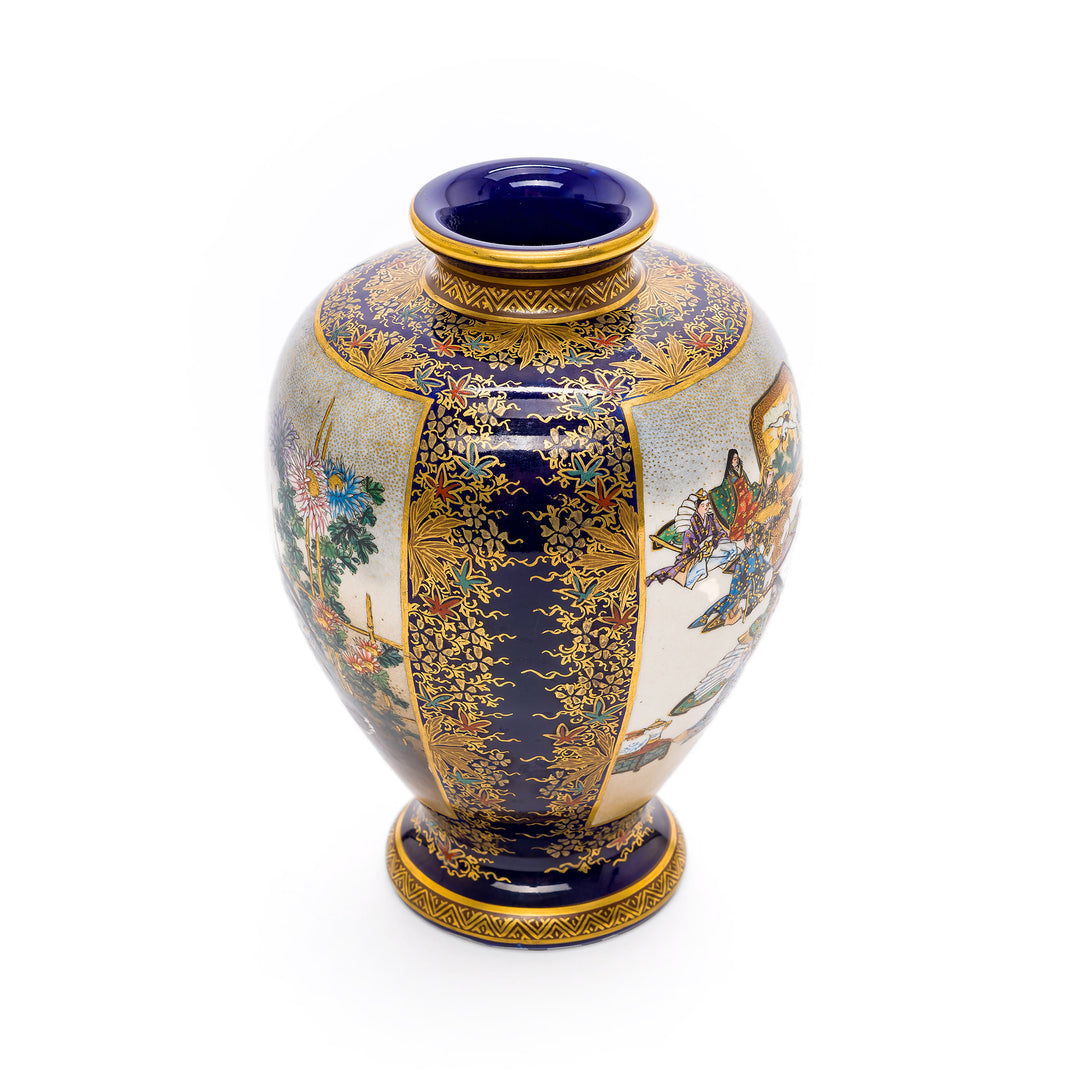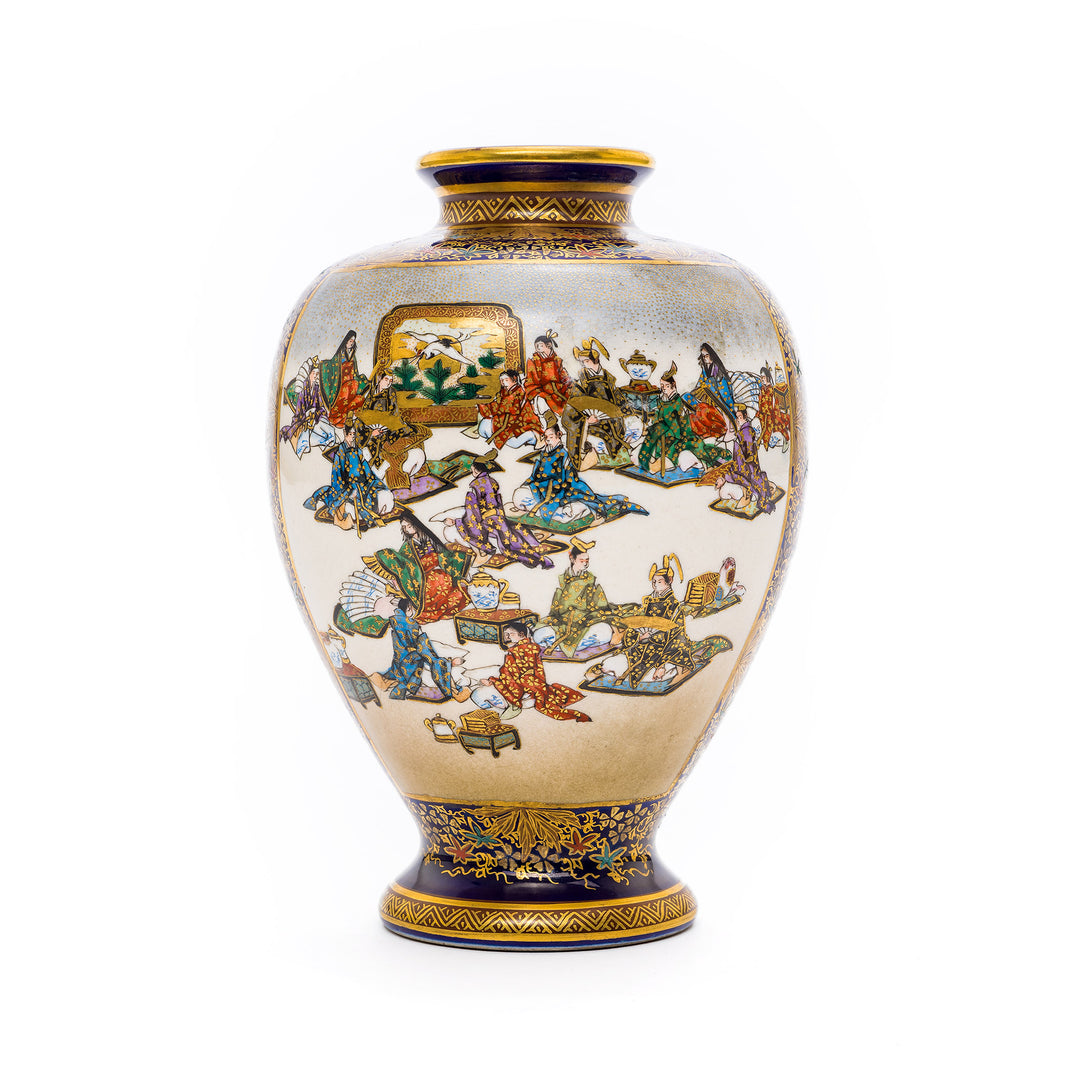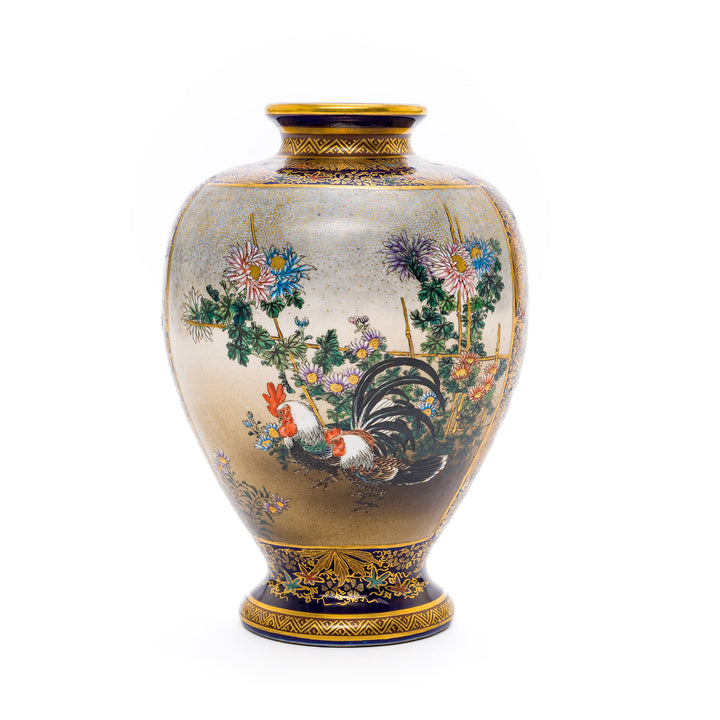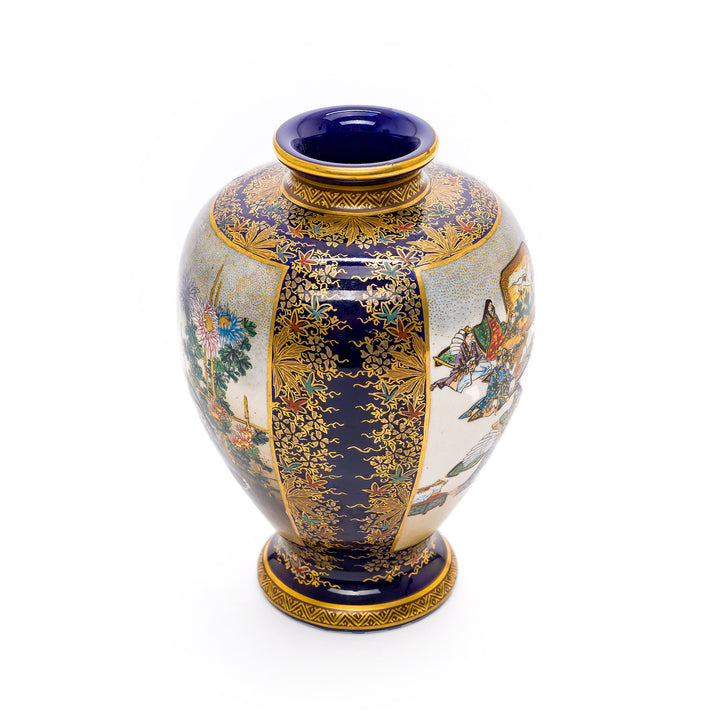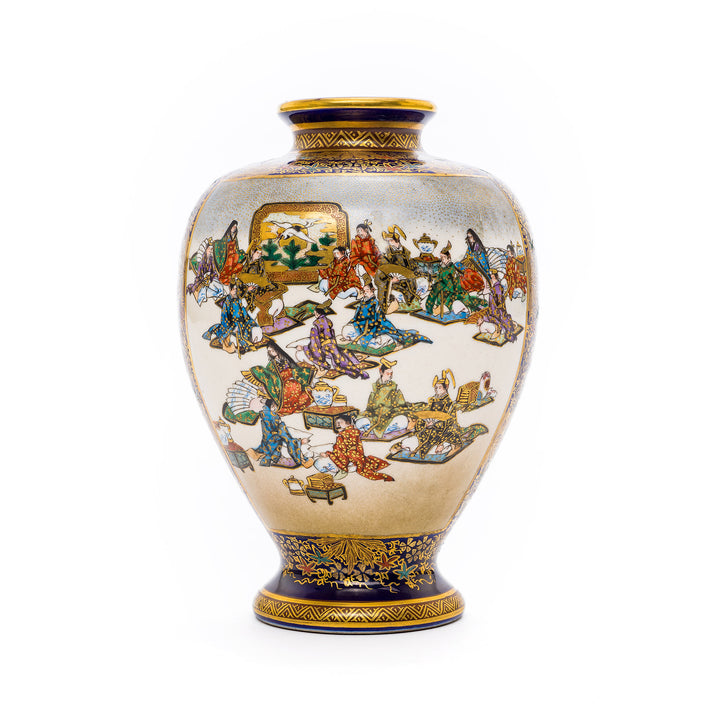Blue-Ground Vase
22462
Radiant Legacy in Cobalt and Gold
- Dimensions: Width: 4.5 inches, Depth: 4.5 inches, Height: 6 inches
- Material: Fine porcelain with cobalt blue ground
- Decoration: Hand-painted enamel scenes with extensive gold detailing
- Design: Ovoid body with flared foot and neck
- Motifs: Roosters, chrysanthemums, noble figures, and floral sprays
- Origin: Kinkazan ware, Kyoto, circa 1900 (Meiji period)
This exquisite Kinkazan blue-ground vase, crafted in Kyoto around 1900, is a rare and refined example of Meiji-period porcelain art. Set against a deep cobalt blue base, its surface comes alive with elaborate gilded accents and vivid enamel panels that illustrate the elegance of nature and nobility. Its classic ovoid form with a flared base and neck creates a striking silhouette, reflecting the harmony and precision of Japanese ceramic tradition.
Symbolic Scenes in Vivid Detail
One side of the vase features a pair of roosters strutting among chrysanthemums—symbols of courage and longevity—set in a serene garden scene. The opposite side reveals a lively tableau of aristocratic figures clad in ornate kimonos, engaging in refined cultural pastimes. Separating the two scenes, vertical bands in shimmering cobalt blue are adorned with gilt floral sprays, enhancing the rhythm and richness of the overall composition.
Key Features of the Meiji-Era Kinkazan Vase
- Cobalt blue ground with cascading gold foliage and geometric borders
- Hand-painted scenes of courtly life and natural symbolism
- Influence of cloisonné metalwork evident in precision and layout
- Ovoid form with flared lip and base for visual balance
- Rare example of Kinkazan ware, highly prized in the Meiji period
- Fusion of Japanese tradition with global decorative appeal
Enamel Mastery with Imperial Influence
The vase's surface glows with meticulous craftsmanship, where the cobalt glaze acts as a dramatic backdrop to the rich enamel storytelling. Gilt details cascade like golden vines, evoking cloisonné-style artistry while grounding the vase in Kyoto’s decorative legacy. Each brushstroke—on feather, flower, or robe—is a tribute to Japan’s legacy of detailed artisan work.
A Timeless Statement of Sophistication
Whether showcased as a stand-alone masterpiece or integrated into a broader collection, this Kinkazan vase is a conversation piece rich in narrative, technique, and symbolism. It bridges past and present with grace—ideal for both traditional interiors and curated modern displays.
Frequently Asked Questions
What are the dimensions of the Kinkazan blue-ground vase?
The vase measures 6 inches in height and 4.5 inches in both width and depth, making it a versatile size for tabletop or cabinet display.
What materials and techniques are used in this vase?
This vase is crafted from fine porcelain with a cobalt blue ground, hand-painted enamel scenes, and extensive gold detailing inspired by cloisonné work.
What do the rooster and chrysanthemum motifs represent?
In Japanese symbolism, roosters represent courage and vigilance, while chrysanthemums are associated with longevity and rejuvenation.
Is this an antique or a reproduction?
This is an authentic antique Kinkazan piece, crafted in Kyoto during the Meiji period, circa 1900.
What is Kinkazan ware?
Kinkazan ware refers to a style of porcelain developed in Kyoto, known for its opulent decoration, deep glazes, and combination of traditional Japanese motifs with techniques influenced by international art trends.
How should I care for this antique vase?
Handle with care and avoid exposure to direct sunlight or abrasive cleaners. Gently dust with a soft, dry cloth to maintain the integrity of the enamel and gold details.
Is this vase suitable for gifting or display?
Absolutely. Its historical value and artistic refinement make it an exceptional gift for collectors or a distinguished focal point in any interior setting.
What makes this piece unique?
Its hand-painted dual scenes, deep blue glazed ground, and gilt accents showcase the height of Meiji-period artistry, making it a rare and museum-worthy example of Kinkazan porcelain.



